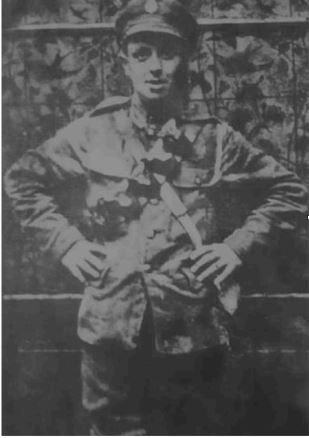Army Service Corps

William Charles Phillips was born on 5 March 1884 at Tetbury, Gloucestershire. He was the son of Charles (a baker, who lived from 1855-1894) and his wife Elizabeth Emma Hooper, born in 1853, year of death unknown. William was baptised at Luckington on 8 June 1884. He had a sister who was born and died in 1886.
William became a horse groom and on 7 November 1905 married Violet Cook at Tetbury: the couple went on to have five children: Charles William (born 9 June 1907); Gertrude Anne (24 February 1910); Rhoda Elizabeth (28 November 1911); Minnie Blanche (24 September 1913) and William Henry (15 April 1915).
According to the 1911 Census, all children living then were born at Hawkesbury Upton and the census indicates that there may have been a further two children who died prior to 1911. Driver Phillips Army service papers indicate that whilst serving his wife and family lived at nearby Tormarton.
Very unusually, Driver Phillip’s Army Service and Pension records have both survived. He attested for military service at Bristol on 4 November 1914, signing on for an initial three years. He stated his age to be 29 years and 244 days, which may have been an understatement, as he would have attained the age of 30 in March 1914. He was a short man, only five feet and four and a half inches tall. Given his occupation it was not surprising that he was posted as a Driver to the Army Service Corps (ASC) and the ‘T3’ prefix to his number 030095 indicates service in the New Army Horse Transport. He joined the Army at Aldershot on 6 November 1914 and was posted to 165 Company, ASC on 23 November 1914
He was to spend just over a year (to 14 November 1915) serving in the UK, before being posted overseas to join the British Expeditionary Force (BEF) in France and Flanders. He served there until 10 October 1916.
Exactly what happened to him on the Western Front is not known. Although ‘Ally Sloper’s Cavalry’ was the derogatory nickname given to the ASC by the front line infantry, those involved with the transport and the supply of food and materials from the rear to the front line were frequently subjected to great danger. This was principally from enemy shell fire.
Routes were often targeted either directly or indirectly. It is possible that, in the course of duty, William Phillips encountered or witnessed an event of such violence or horror that he was permanently scarred mentally.
He was, according to his Army discharge documents, considered ‘of good military character’ and ‘a sober and hardworking man’.
A medical board convened on 30 December 1916 noted that he had gone to France in 1915 and on an unspecified date had been admitted to hospital before being sent back to England on 10 October 1916. He was described as being ‘confused and disorientated’ and ‘much demented and memory greatly impaired’. There were physical signs ‘indicative of general paralysis’ and ‘articulation greatly impaired’. The diagnosis was neurasthenia, or ‘shell shock’; what would be referred to today as post traumatic stress disorder (PTSD). Rather surprisingly the medical board did not consider his condition to be a direct result of active service but aggravated by it. This view did appear to change prior to discharge and the medical board did consider it to be a permanent disability.
Discharge from the Army followed on 20 January 1917, Driver Phillips being considered as ‘no longer fit for military service’ on account of ‘general paralysis of the insane’. He was granted a Silver War Badge in recognition of his two years and 79 days in the Army.
According to records held at the Gloucestershire Archives, William Charles Phillips was admitted to the County Asylum on 17 January 1917. The establishment was either located at Horton Road or Coney Hill, Gloucester. The records state that he was a ‘pauper patient’ and also a ‘service patient’, who was discharged to ‘private class’ on 8 August 1917. It is unclear what is meant by ‘private class’ but it may have been to a private asylum, such as Barnwood House.
According to his Army papers death occurred on 14 December 1917, aged 32 – the CWGC register and his headstone state the date to be 17 December. Without sight of his death certificate the cause of death is unknown. The fact that he was buried in Gloucester Old Cemetery, where a CWGC headstone marks his grave, is an indicator that he continued to live in Gloucester and had not returned to Tormarton or the Tetbury area.
His wife, Violet, was granted a widow’s pension, effective from 4 May 1918, plus an allowance for their children. She re-married in Tetbury on 9 June 1919, becoming Mrs Hurcomb and died in 1949.
Researched by Graham Adams 15 October 2019
(The photo of Driver Phillips was obtained from a family tree posting on the Ancestry website)
